Repair of a septic tank "Topas": features of professional and self-service
When there is a breakdown of engineering systems in a private house, then it’s time to joke: here comes the hour of reckoning for several years of amenities. The failure of the treatment plant seems to stop life in the house - now there is no way to arrange a full cleaning, nor to wash, or to wash.
Calling a specialist is not always possible, so you have to repair the TOPAS septic tank and carry out maintenance on your own. Let's look at the septic tank device and the most common breakdowns that can happen.
The content of the article:
Briefly about the principle of the station
When starting to repair a treatment plant, it is necessary to have an idea of the principle of its operation. The device is based on the treatment of household liquid waste with bacteria.
And if non-volatile systems rely on the work of anaerobic bacteria, whose vital activity is possible in the absence of oxygen, then treatment plant "Topas" cleans waste thanks to anaerobic and aerobic organisms.
The difference in the living conditions of these microorganisms also affects a completely different principle of operation of wastewater treatment devices.
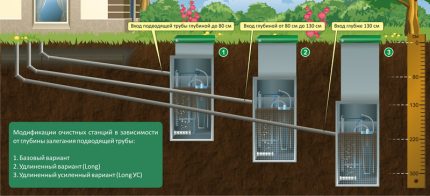
In conditions of complete lack of oxygen, the digestion of waste material is carried out by anaerobes. The process takes place in the first compartment of the treatment plant.Then, the settled and fermented wastewater is placed at the disposal of aerobes located in the next three compartments of the system.
Aerobic microorganisms break down and process suspended particles and impurities that are in the drains much faster, but they require a constant flow of oxygen. In addition, oxygen is necessary for the oxidation of the mass. Aeration of the sewage is provided by an electric pump, so the device cannot operate without power supply. Read more details how aerobic and anaerobic bacteria work for septic tanks.
Septic tank device and cleaning technology
The septic tank is divided into four independent tanks, and each performs a special function.
The chambers are interconnected in such a way that with an intensive supply of effluents, the purification process accelerates, and with a small one it becomes more efficient due to the multiple distillation of waste.
Since the flow of wastewater is irregular in households, this feature is very important for the quality and uninterrupted operation of the station.
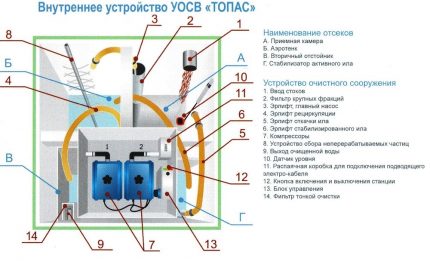
Operation in continuous fluid flow mode
In the case of continuous flow of wastewater, the process occurs as follows:
- Through the inlet pipe (1), the effluent enters the first receiving chamber (A) (or, as it is also called a surge tank). There they mix with previously received waste; large particles settle. As soon as the drains reach a certain level, the sensor is triggered.
- Automation includes an airlift (3), which pumps drains through a filter that performs rough cleaning (2) and a hair trap in the second chamber (B). Also included is a compressor (7) that supplies air.
- In aeration tank (second chamber B), sewage is biologically treated using biologically activated sludge: large particles are split into smaller ones, and organic matter is processed by aerobes. Bubbles of oxygen injected here at the same time provide mixing of effluents with activated sludge, and it acts as an adsorber, linking suspended particles.
- A seethe mixture of sludge and effluent enters the third compartment - the secondary sump (B), pumps their recirculation airlift (4) through the tank in the form of an inverted pyramid. This is the separation of purified water from activated sludge.
- The sludge separated from the liquid component enters the stabilization compartment (G), and the clarified water is discharged outside the station through the outlet pipe of the device (9).
The station, with the exception of scheduled inspections and cleaning, does not require user participation - all processes proceed automatically. The purified water can be drained into the ground, an absorption well, a gutter, and used for irrigation.
Reverse phase
If the system does not receive enough wastewater for its continuous operation, the installation operates in recirculation mode. As soon as the level in the first compartment (A) reaches the set minimum value, the float switch (10) is activated.
The switch acts on the solenoid valve and the drains go through the entire cleaning process again.
The recirculation mode occurs in the following sequence:
- In the receiving tank (A) aeration of wastewater takes place.
- After the aeration tank (B), the effluent is pumped into the stabilization compartment of activated sludge (G). There, the precipitate is divided into fractions.
- Old and heavy sludge sinks to the bottom of the chamber (G), and light sludge, together with clarified drains, goes back to the first chamber (A).
As soon as the water mirror in the surge tank (A) reaches its maximum, the system switches to direct continuous cleaning.
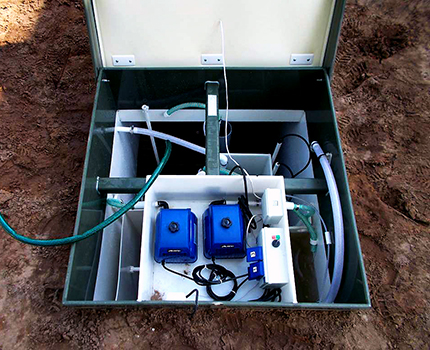
How to avoid breakdowns?
An important detail in the prevention of breakdowns is the correct installation of septic tank Topas. In addition, like any device or mechanism, a sewage treatment system requires regular technical inspection. It consists in a visual assessment of the work, the pumping of accumulated sediment.
During the inspection, you may have to eliminate blockages or carry out a minor repair of the TOPAS installation. The regularity of preventive measures is set out in the table.
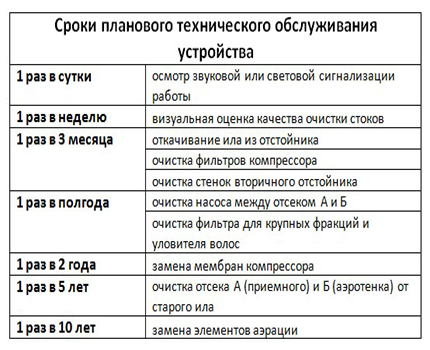
The design of the septic tank is made in such a way that all elements can be removed and washed, and the filter of large sewage from the collected hair can be cleaned. Sludge from the stabilization chamber must be pumped out at least once a year. If the water in the water supply system is hard, the station needs to be cleaned more often.
Removing accumulated sludge from chambers
The longer the sewage treatment plant operates, the greater the content of sludge and sewage in it, the more the compressor filter is dirty. Therefore, equipment requires regular cleaning.
All work is performed in a certain sequence:
- Disconnect the device from the power supply. This will allow sludge to settle to the bottom and make it possible to safely clean the compressor filters.
- Unscrew the screws from the compressor covers to have access to the filters. The filter in the form of a foam pad is removed and shaken out. If it is very dirty, it is washed under running water and dried. The covers are put back in place and tightened.
- Within 15 minutes, the sludge settles and you can start pumping. To do this, lower the drainage pump to the very bottom of the sludge stabilizer chamber and pump out the sediment until the water level drops by 50 cm.
- Next, the aeration chamber is cleaned.Sludge is pumped out from the bottom, lowering the water mirror by 15 cm.
It is not necessary to completely pump out activated sludge, because it helps to clean sewage.
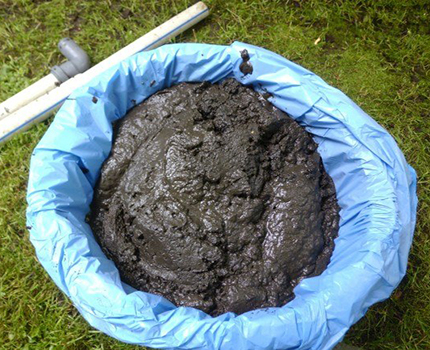
Cleaning all device items
The next step is to clean the airlift and filter for large fractions:
- Before removing the hoses of the Mamut pump and filter, mark one of the tubes and the pipe to which it is attached with electrical tape so as not to confuse them in the future (they have different capacities).
- Disconnect the flexible tube from the pump pipe. If it is poorly removed, the joint is warmed up.
- They take out the airlift tube and blow it under the pressure of water or air.
- The filter of large fractions is removed. It is washed outside, the collected garbage is shaken out in a bucket, the holes are cleaned of hair clogged in them, and the filter is washed from the inside.
- Then remove and clean the hair trap.
The final stage - washing under pressure of the walls and tubes of the station, collecting floating debris. Before starting work, close the compressors with cellophane to protect them from water. Rinse begins with the upper elements.
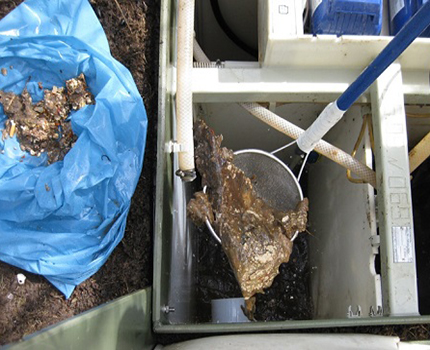
A good pressure of water, which is able to flush old deposits, gives the high-pressure apparatus.
Assemble the system in reverse order. Hose markings can be left for future maintenance work. The next cleaning can be done after 6 months.
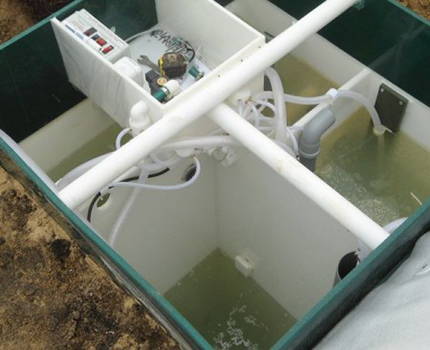
Assessment of the operation of the device for water quality
A working sewage treatment plant at the outlet gives practically clean water without impurities and extraneous odors. It can be used for watering lawns, flower beds, and a garden. If the water from the device flows cloudy, this indicates a poor cleaning.
The culprit may be the short life of the station (up to one month): the new equipment does not have a sufficient amount of biologically active sludge, which plays the main role in wastewater treatment. Biological equilibrium can be established faster by adding activated sludge from an already operating station.
This also happens due to changes in external conditions: a sharp decrease in temperature, indicating a high acidity of the pH of the wastewater or the discharge of chemicals (for example, containing chlorine) in them. Usually, when these reasons are eliminated, the situation normalizes by itself.
If the clouding of the effluent is constantly observed, then the most probable reasons can be called an increase in the number of effluents, insufficient aeration. The latter sometimes happens due to damage to the distribution tubes and oxygen leakage.
The quality of water treatment can be determined visually by taking a sample. To do this, from the working device in the compartment of the aeration tank, seethe fluid is collected in a container of glass with a volume of about 1 liter. A properly working installation will have a ratio of settled sludge to clear water of 2: 8.
If the sludge is less, it means that the installation is not yet fully ready for operation or insufficiently loaded with sewage. If more, then this probably means that the system cannot cope with a large amount of liquid household waste or the float switch is set low in the compartment and does not switch to recirculation mode.
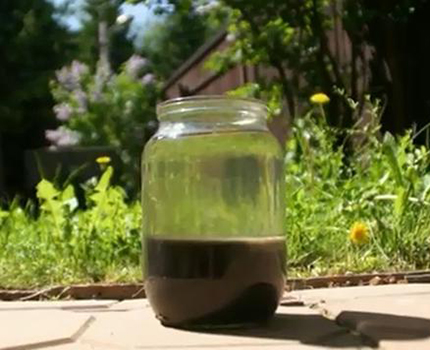
Damage to the treatment plant and methods for their correction
Almost all breakdowns of the pumping station are manifested by an increase in the level of effluents in the receiving compartment. Raising the level activates an emergency float, thanks to which an alarm is triggered - a bell or a light signal. Thus, the user learns about the dangers of flooding the system and the discharge of untreated sewage outside the device.
Wastewater treatment plant
First of all, it is necessary to check whether the channel for removing treated effluents from the device is possibly clogged or frozen. If not, then you need to look for the cause of the station flooding based on the type of equipment. It can be with a gravity drainage system or with forced pumping.
For forced pump models, the problem may be drainage pump breakdown or sticky float switch. To check the operation of the pump, it is removed and connected to another outlet. If the pump is in order, but does not turn on after connecting to the station, then most likely the problem is with the float switch - it is necessary to replace it.
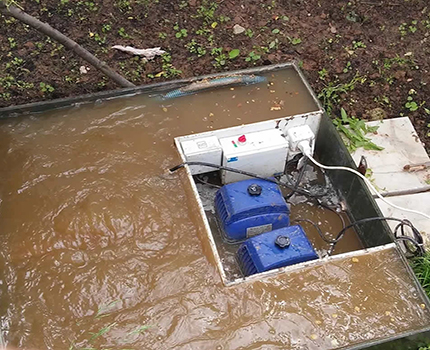
The following problems may be common to gravity and forced models. Check if fluid is being pumped from the receiver compartment to the aeration tank. If not, then the culprit is the malfunction of the airlift.
The causes of failure can be the following:
- damaged airlift tube;
- clogged airlift of the main pump;
- defective float switch;
- damaged compressor membrane, which supplies air to the airlift.
Failures are repaired by replacing damaged items or cleaning clogged areas.
RCD trip and problems with power supply
If an RCD (residual current device) is triggered when the station starts up, the cause may be damage to the compressor or drain pump, float switch. It is also necessary to check the wiring, sockets.
Disturbances in the operation of the installation can also be caused by a prolonged blackout, and then there is a chance of overfilling of the tanks and the occurrence of an unpleasant odor in connection with the beginning of the development of anaerobic microorganisms. With voltage drops in the network within 3% of the nominal value, it is necessary to install a stabilizer.
Change in water level in an idle station
It is undesirable to leave the TOPAS cleaning system for a long time without work.
But if this still happened, and it was found that the water level in the tank is changing, then the possible malfunctions may be as follows:
- Damage to plumbing fixtures, which leads to water leakage. You need to find the source of leaks and repair or replace.
- Damaged device case. If the problems are small, then you can try to solder the case, if not, you need to contact the professionals for help, and they will replace the damaged area. And it’s good if you can get along with the repair, because replacing the entire case will cost a lot.
- Incorrect installation and, as a result, flooding by rain or flood water.
- The tank of the station should be installed so that the lid rises above the ground by 15 cm.
A poorly organized release of purified water from the system can also become a problem. A poor outflow capacity can aggravate a situation of poor outflow.
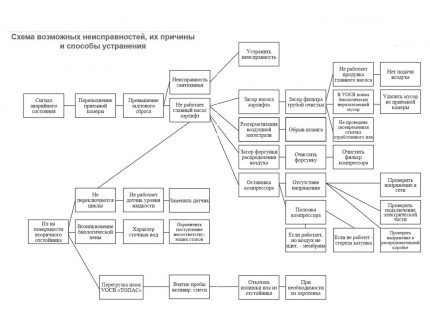
Operation tips
Violation of the operating rules deprives the consumer of the right to warranty service.They also say that maintenance and repair of WWTP TOPAS can only be carried out by specialists of service companies or persons who have studied the installation instructions and have been instructed in safety measures.
Also on our website there is an article on how to properly maintain the septic tank Topas in winter - read Further.
For long-term and successful use of the station, it is necessary to conscientiously implement the recommendations, namely:
- It is forbidden to make structural changes to the station device;
- it is unacceptable to drain various chemicals, products containing chlorine (in large quantities), water obtained from the regeneration of treatment systems for drinking water;
- It is forbidden to dump construction waste, biodegradable compounds, food residues and cleaning forest mushrooms, and pet hair into the sewer system.
Despite the numerous prohibitions, the manufacturer fully admits the reasonable use of modern detergents and hygiene products:
- it is allowed to dump toilet paper into the sewer system;
- it is possible to drain drains of chlorine-free washing and dishwashers;
- it is allowed no more than once a week to drain a small amount of cleaning products for plumbing, kitchen equipment, sanitary ware;
- it is allowed to dump kitchen drains without restrictions.
In addition, during a power outage, it is necessary to minimize water consumption to prevent overfilling of chambers and spills of contaminated water.
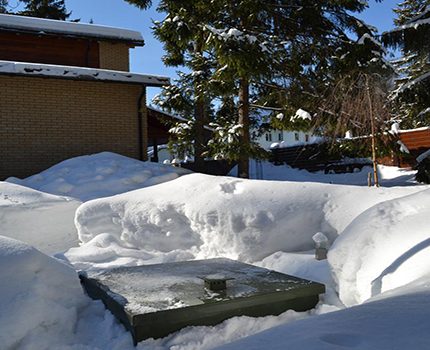
Conclusions and useful video on the topic
The planned cleaning of the TOPAS station is available in the video material:
Video about the repair of the station after flooding:
It is quite possible to independently clean and repair LOS TOPAS. But, in order to be able to take advantage of warranty service, it is better to ask the manufacturer or seller what kind of work the users themselves are allowed to carry out. Otherwise, interference with the system may invalidate the right to free service.
Do you have any questions after reading the material? Or have you ever encountered a septic tank breakdown and you have something to advise our readers, please leave comments, share experiences, ask questions, and we will try to answer them promptly.

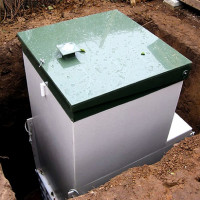 Installation of septic tank “Topas”: do-it-yourself installation + service rules
Installation of septic tank “Topas”: do-it-yourself installation + service rules 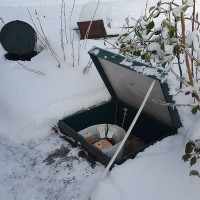 How is the Topop septic tank serviced in winter
How is the Topop septic tank serviced in winter 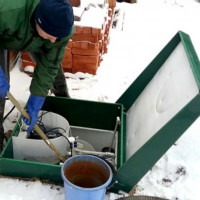 Rules for servicing a septic tank in winter: cleaning and maintenance
Rules for servicing a septic tank in winter: cleaning and maintenance 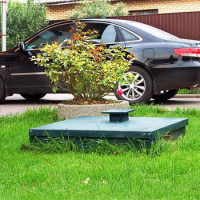 Overview of the septic tank for the cottage “Unilos Astra”: device, service rules, advantages and disadvantages
Overview of the septic tank for the cottage “Unilos Astra”: device, service rules, advantages and disadvantages 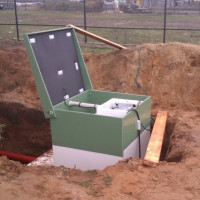 Overview septic tank for giving “Topas”: principle of operation, device, advantages and disadvantages
Overview septic tank for giving “Topas”: principle of operation, device, advantages and disadvantages 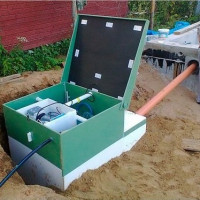 Overview of the septic tank “Eurobion Yubas”: device, advantages and disadvantages, comparison with competitors
Overview of the septic tank “Eurobion Yubas”: device, advantages and disadvantages, comparison with competitors  How much does it cost to connect gas to a private house: the price of organizing gas supply
How much does it cost to connect gas to a private house: the price of organizing gas supply  The best washing machines with dryer: model rating and customer tips
The best washing machines with dryer: model rating and customer tips  What is the color temperature of light and the nuances of choosing the temperature of the lamps to suit your needs
What is the color temperature of light and the nuances of choosing the temperature of the lamps to suit your needs  Replacement of a geyser in an apartment: replacement paperwork + basic norms and requirements
Replacement of a geyser in an apartment: replacement paperwork + basic norms and requirements
Please tell us how to use the septic tank correctly in the “summer resident” mode. Those. Does it work only in summer or only on weekends? What to do with power? Disable or not? Thank.
Hello. In frosts below -20 or in a prolonged absence, Topas is recommended to preserve. For this:
1. Turn off the power.
2. Disconnect the air compressors from the septic tank.
3. Remove the purified water discharge pump (if you have such a function).
4. Leave at least 3/4 of the total maximum volume in the septic tank.
About the "summer resident" mode or as it is also called - the weekend mode.When a power outage occurs, the work of the station will not be complete, since the lack of oxygen for aerobic bacteria for more than 6 hours is fatal. Anaerobic survivors, but your station will be a regular cesspool without wastewater treatment, with a capacity of up to 200 liters.
If this happens rarely, let's say you live in a country house, you just sometimes leave for a long time - the station will resume work, aerobic bacteria will begin when the station starts operating normally. But on arrival only on weekends - this is irrelevant.
Topas is like a Lada, all the time you need to repair something, it just happens to be serviced and after a week the pump doesn’t pump the mamut, in general there is always something to do, it’s better to treat the septic tank as a hobby))